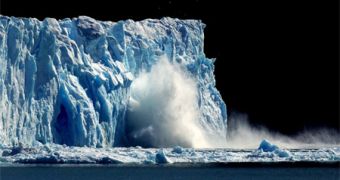Between the years 2003 and 2009, glaciers scattered all around the world dropped a whopping 260 gigatons of water on a yearly basis, argues a research whose findings were published in today's issue of the journal Science.
According to the researchers who looked into this issue, the amount of water lost by these glaciers accounted for 29% of the sea level rise recorded within said period.
Due to the fact that sea level rise is also influenced by the melting of the ice sheets in the Arctic and the Antarctic, and by the increase in oceanic temperatures worldwide (i.e. warm water typically takes up more space), documenting the impact of glaciers on sea level rise is a fairly tricky thing to do.
Thus, the researchers had to use both on-the-ground measurements and satellite imaging.
The official website for the University of Colorado Boulder says that, according to the findings of this investigations, the glaciers which lost the most water between 2003 and 2009 were the ones in the Arctic Canada, Alaska, coastal Greenland, the southern Andes and the Himalayas.
Professor Tad Pfeffer, currently working with the aforementioned university, wished to draw attention to the fact that these melting glaciers' contribution to rising sea levels must not be overlooked.
“Because the global glacier ice mass is relatively small in comparison with the huge ice sheets covering Greenland and Antarctica, people tend to not worry about it,” the professor said.
“But it’s like a little bucket with a huge hole in the bottom: it may not last for very long, just a century or two, but while there’s ice in those glaciers, it’s a major contributor to sea level rise,” he further elaborated on the matter at hand.
Several estimates show that, should all the glaciers in the world suddenly melt, sea levels would increase by as much as 2 feet (about 0.6 meters).

 14 DAY TRIAL //
14 DAY TRIAL //